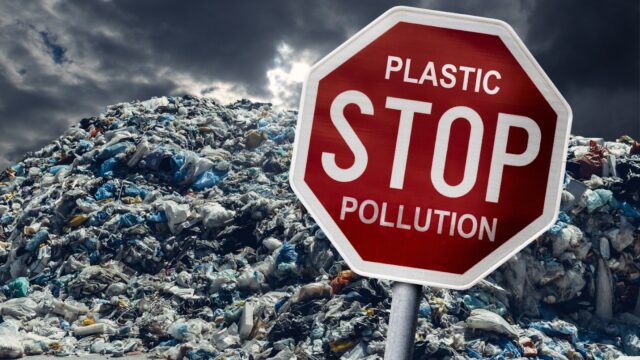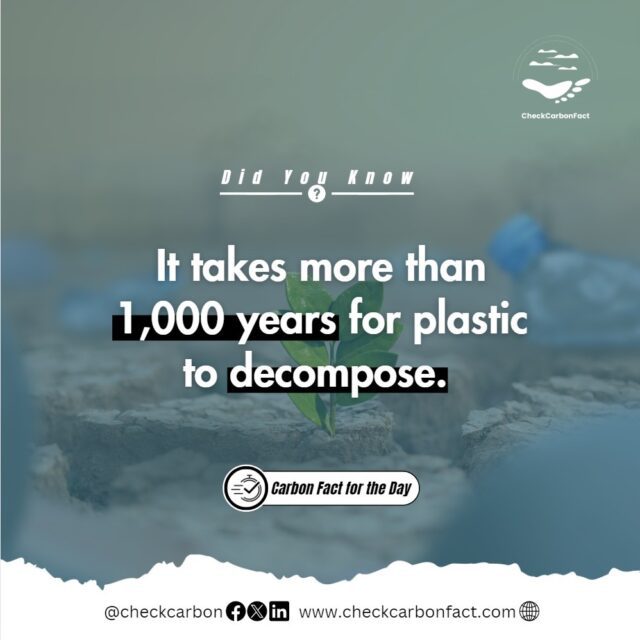Every April 22nd, people around the globe come together to celebrate International Mother Earth Day, a day dedicated to raising awareness and taking action to protect our planet. As we mark this important occasion in 2024, the focus is squarely on one of the most pressing environmental issues of our time: plastic pollution.
The theme for International Mother Earth Day 2024, “Planet vs. Plastics,” underscores the urgent need to address the pervasive problem of plastic pollution and its detrimental impact on the environment. From choking marine life to contaminating our drinking water, the proliferation of plastic waste poses a significant threat to the health and well-being of ecosystems and communities worldwide.
In this article, we will discuss the significance of the International Earth day; its history and core issues, as well as the relevance of this year’s theme.
A Brief History
The history of Earth Day traces back to the 1960s, when the world was grappling with the consequences of unchecked industrialization. Lead-filled air, polluted waterways, and environmental degradation were the norm, tolerated in the name of industrial progress and prosperity. However, the landscape began to shift with the publication of Rachel Carson’s groundbreaking book, “Silent Spring” in 1962. Carson’s eloquent prose served as a clarion call, awakening the public to the interconnectedness of pollution, environmental health, and human well-being. Carson’s portrayal of the detrimental effects of pesticides and pollution on the environment sparked widespread public awareness and ignited a nascent environmental movement.
Senator Gaylord Nelson of Wisconsin, spurred by Carson’s work and witnessing the devastation of the Santa Barbara oil spill in 1969, seized upon the burgeoning momentum for change. Drawing inspiration from the anti-war protests of the era, Nelson conceived the idea of a nationwide teach-in to raise consciousness about environmental issues. He recruited Denis Heyas, a young activist. And together, they choose April 22, a weekday falling between Spring Break and Final Exams, to maximize the greatest student participation.
They came up with the name to Earth Day, which sparked media attention and interest, leading to an attendance of an estimated 20 million Americans ( roughly 10% of the population at the time). Earth Day quickly evolved into an annual tradition, spreading beyond U.S. borders to become a global phenomenon.
International Mother Earth Day and the UN
What started in the US became an international celebration in 2009, when the UN General Assembly in 2009 officially adopted April 22, and renamed it as International Mother Earth Day.
The 1972 UN Conference on the Human Environment in Stockholm marked the dawn of global recognition of the intricate ties among humanity, other species, and our planet, giving rise to World Environment Day on June 5th and the UN Environment Programme. Subsequent milestones such as the adoption of Agenda 21, the Rio Declaration on Environment and Development, and the Statement of principles for the Sustainable Management of Forests at the Rio de Janeiro Earth Summit in 1992 propelled sustainable development to the forefront of international discourse.
This momentum surged through subsequent events like the Earth Summit in Johannesburg in 2002, the declaration of 2008 as the International Year of Planet Earth, and the inception of Mother Earth Day by the UN. Rio+20 further solidified commitments to sustainable development with a focused political outcome document, while recent gatherings like the Climate Action Summit 2019 and COP25 underscored the urgency of fulfilling the Paris Agreement. The UN honors these efforts through initiatives like Harmony with Nature, fostering global dialogue on International Mother Earth Day to explore holistic approaches and share national experiences in measuring sustainable development in harmony with nature.
Earth Day’s Core Issues: A Call to Action
Earth Day’s agenda extends beyond mere celebration; it encompasses a comprehensive framework of ten core issues, each serving as a call to action for individuals, communities, and nations to address critical environmental challenges. These issues encapsulate the multifaceted nature of environmental conservation and underscore the interconnectedness of our planet’s ecosystems. Let’s delve deeper into each core issue:
Advocacy
Earth Day advocates encourage individuals and organizations to engage in advocacy efforts, urging elected officials to prioritize environmental policies and legislation. Initiatives like the “Million Acts of Green” campaign inspire everyday citizens to adopt sustainable practices, such as composting, reducing carbon footprints, and recycling e-waste, amplifying the collective impact of individual actions.
Climate Change
At the forefront of environmental concerns, climate change represents an existential threat to our planet’s health and stability. Earth Day initiatives aim to raise awareness about the causes and consequences of climate change, advocating for mitigation measures and supporting international agreements like the Paris Climate Agreement. By promoting renewable energy sources and sustainable practices, Earth Day activists seek to mitigate the impacts of climate change and foster a more resilient future.
Conservation & Biodiversity
Biodiversity conservation lies at the heart of Earth Day’s mission, recognizing the intrinsic value of ecosystems and the myriad species that inhabit them. Earth Day activities include tree planting initiatives, habitat restoration projects, and wildlife conservation efforts, aimed at preserving and enhancing the planet’s biodiversity. By safeguarding natural habitats and promoting sustainable land management practices, Earth Day advocates work to protect endangered species and maintain ecological balance.
Education
Education is fundamental to fostering environmental literacy and empowering individuals to become agents of change. Earth Day education programs provide educators, students, and the public with resources and tools to understand environmental issues and take meaningful action. From classroom workshops to community outreach events, Earth Day fosters a culture of environmental stewardship and lifelong learning, equipping future generations with the knowledge and skills to address pressing environmental challenges.
Energy
Transitioning to renewable energy sources is essential for mitigating climate change and reducing reliance on fossil fuels. Earth Day initiatives promote the development and adoption of renewable energy technologies, advocating for policy incentives and investment in clean energy infrastructure. By supporting projects that harness solar, wind, and other renewable resources, Earth Day activists accelerate the shift towards a sustainable energy future, minimizing carbon emissions and promoting energy independence.
Food & Agriculture
The food system plays a critical role in environmental sustainability, with agricultural practices impacting land use, water resources, and biodiversity. Earth Day advocates raise awareness about the environmental footprint of food production, advocating for sustainable farming practices and promoting access to healthy, locally sourced food. By supporting organic agriculture, reducing food waste, and championing regenerative farming techniques, Earth Day initiatives promote a more resilient and equitable food system.
Green Economy
Transitioning to a green economy entails fostering economic growth while minimizing environmental degradation and promoting social equity. Earth Day advocates promote the development of green industries and sustainable business practices, advocating for policies that incentivize investments in renewable energy, energy efficiency, and green infrastructure. By creating green jobs and fostering innovation, Earth Day initiatives contribute to economic prosperity while safeguarding the planet’s natural resources for future generations.
Green Schools
Education plays a pivotal role in shaping sustainable behaviours and attitudes from a young age. Earth Day’s Green Schools Campaign promotes environmental education and sustainability initiatives in schools, advocating for healthy school environments, sustainable food practices, and green building design. By integrating environmental themes into the curriculum and promoting hands-on learning experiences, Earth Day initiatives empower students to become environmental stewards and leaders in their communities.
Recycling & Waste Reduction
Addressing the global waste crisis requires concerted efforts to reduce, reuse, and recycle materials to minimize environmental impacts. Earth Day initiatives promote waste reduction strategies, such as composting, recycling, and plastic alternatives, encouraging individuals and businesses to adopt sustainable consumption habits. By organizing community clean-up events, advocating for waste management policies, and supporting recycling infrastructure, Earth Day activists strive to create a circular economy that minimises waste and maximizes resource efficiency.
Sustainable Development
Achieving sustainable development entails balancing economic growth with environmental protection and social equity. Earth Day advocates promote sustainable development practices that respect ecological limits and promote human well-being. Initiatives like eco-tourism, sustainable urban planning, and conservation finance contribute to a more sustainable future, preserving natural resources and enhancing the quality of life for all. By embracing sustainable development principles, Earth Day initiatives pave the way for a more resilient and equitable world.
Why Plastic?
Plastic pollution is not merely an environmental concern; it’s a crisis that threatens human health and planetary well-being. As plastics break down into microplastics, they release toxic chemicals into our food, water, and air, posing serious risks to human health. Plastics have saturated our lives to an alarming extent, with over 380 million tons produced annually worldwide. The consequences of this overproduction are dire, with plastics choking ecosystems, poisoning wildlife, and leaching toxins into our environment. From plastic bags that persist for centuries to beverage containers that overwhelm our recycling systems, the scale of plastic pollution is staggering.
The urgency of the situation cannot be overstated. The Global Plastics Treaty proposed by the International Negotiating Committee on Plastic Pollution (INC) mandates an end to single-use plastic production by 2030, guided by the precautionary principle and the polluter pays doctrine.
At the heart of the Planet vs. Plastics campaign lies a vision for a sustainable future—a future where our planet is free from the shackles of plastic pollution, and where human health is prioritized over profit. It’s a vision that requires collective action and unwavering commitment from individuals, businesses, and governments alike.
As we commemorate Earth Day 2024, let us heed the call to action and join the movement for a plastic-free future. Together, we can turn the tide against plastic pollution and safeguard the health of our planet for generations to come.

Consequences of Plastic: A Global Crisis Unfolds
The consequences of plastic pollution reverberate across ecosystems, economies, and societies worldwide, casting a shadow over the very fabric of our planet. Plastic waste, discarded with careless abandon, finds its way into rivers, lakes, and oceans, where it wreaks havoc on marine life. Let’s look at some key negative consequences:
-
Environmental Degradation:
Plastic pollution poses a grave threat to ecosystems worldwide, as discarded plastic waste accumulates in waterways, forests, and marine environments. From entangling marine life to smothering coral reefs, plastics disrupt delicate ecological balance and endanger biodiversity.
-
Health Risks:
Microplastics, tiny particles resulting from the breakdown of larger plastic items, permeate the environment and contaminate food sources. Consumed by marine organisms, microplastics enter the human food chain, posing potential health risks such as hormone disruption, reproductive issues, and the spread of harmful pathogens.
-
Economic Costs:
The economic toll of plastic pollution is substantial, encompassing expenses related to cleanup efforts, healthcare costs associated with plastic-related illnesses, and losses in industries dependent on clean environments, such as tourism and fishing. Developing nations, lacking adequate waste management infrastructure, bear a disproportionate burden of these costs.
-
Social Injustice:
Plastic pollution exacerbates social inequalities, disproportionately affecting marginalized communities with limited resources and access to clean environments. Children, in particular, face heightened risks from plastic exposure, including developmental disorders and respiratory ailments, further perpetuating cycles of poverty and disadvantage.
-
Long-Term Environmental Legacy:
Unlike natural materials, plastics do not biodegrade but rather break down into smaller particles that persist in the environment for hundreds to thousands of years. This legacy of plastic pollution poses ongoing threats to future generations, underscoring the urgency of addressing the issue today.
-
Cultural and Aesthetic Impact:
Plastic pollution not only damages ecosystems but also diminishes the beauty of natural landscapes and cultural heritage sites. Unsightly plastic debris detracts from the aesthetic appeal of environments, diminishing their value for recreation, tourism, and spiritual or cultural significance.
-
Loss of Biodiversity:
Plastic pollution threatens the rich tapestry of life on Earth, as marine and terrestrial species suffer from entanglement, ingestion, and habitat degradation caused by plastic waste. The loss of biodiversity resulting from plastic pollution undermines ecosystem resilience and jeopardizes the services they provide, such as clean air, water, and food.
Understanding the multifaceted consequences of plastic pollution is essential for galvanizing action and mobilizing efforts to address this global challenge. By acknowledging the environmental, health, economic, and social impacts of plastic pollution, we can work towards holistic solutions that promote sustainability and preserve the well-being of both people and the planet.
Mobilizing for Change
Earth Day’s core issues serve as a blueprint for collective action, rallying individuals, communities, and nations to address pressing environmental challenges and forge a more sustainable future. Through advocacy, education, and grassroots activism, Earth Day initiatives mobilize people around the world to protect our planet’s precious ecosystems and secure a healthier, more resilient future for generations to come. As we celebrate Earth Day, let us heed the call to action and work together to safeguard our planet for future generations.
About CheckCarbonFact
CheckCarbonFact is a social accountability platform for promoting sustainability and responsible climate action by citizens, businesses and government. Read more about us here: https://checkcarbonfact.com/about/





